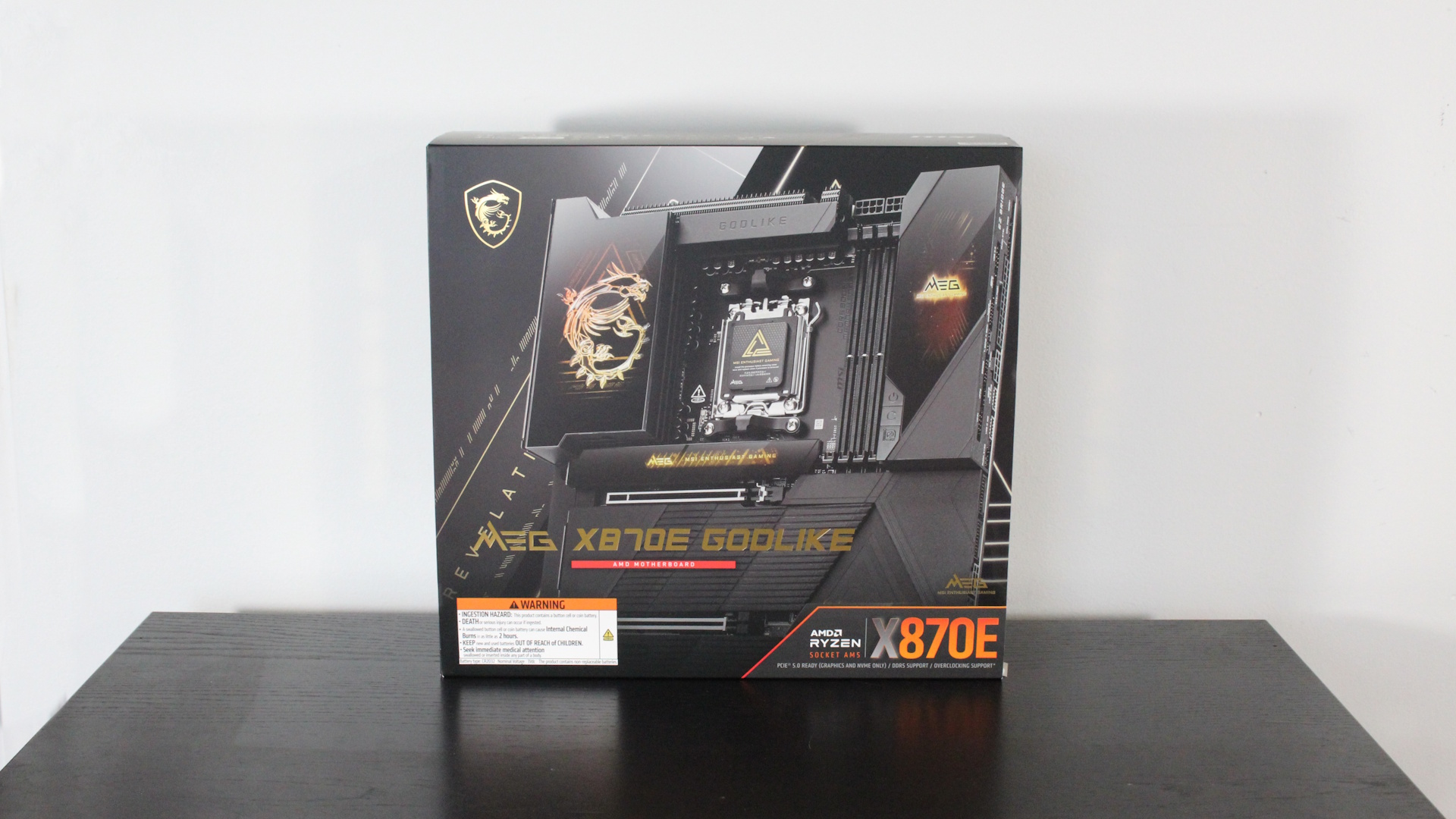Why you can trust Tom's Hardware
Benchmark Results and Final Analysis
Our standard benchmarks and power tests are performed using the CPU’s stock frequencies (including any default boost/turbo) with all power-saving features enabled. We set optimized defaults in the BIOS and the memory by enabling the XMP profile. For this baseline testing, the Windows power scheme is set to Balanced (default) so the PC idles appropriately.
Synthetic Benchmarks
Synthetics provide a great way to determine how a board runs, as identical settings should produce similar performance results. Turbo boost wattage and advanced memory timings are places where motherboard makers can still optimize for stability or performance, though, and those settings can impact some testing.
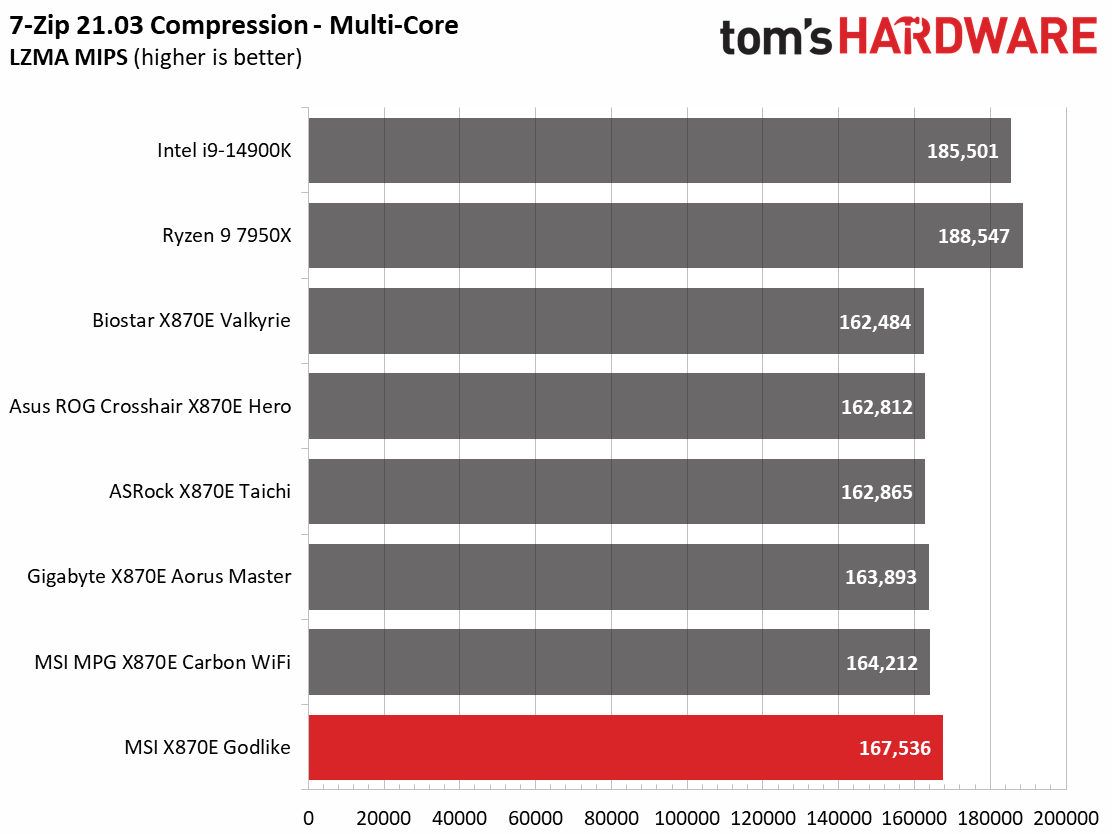
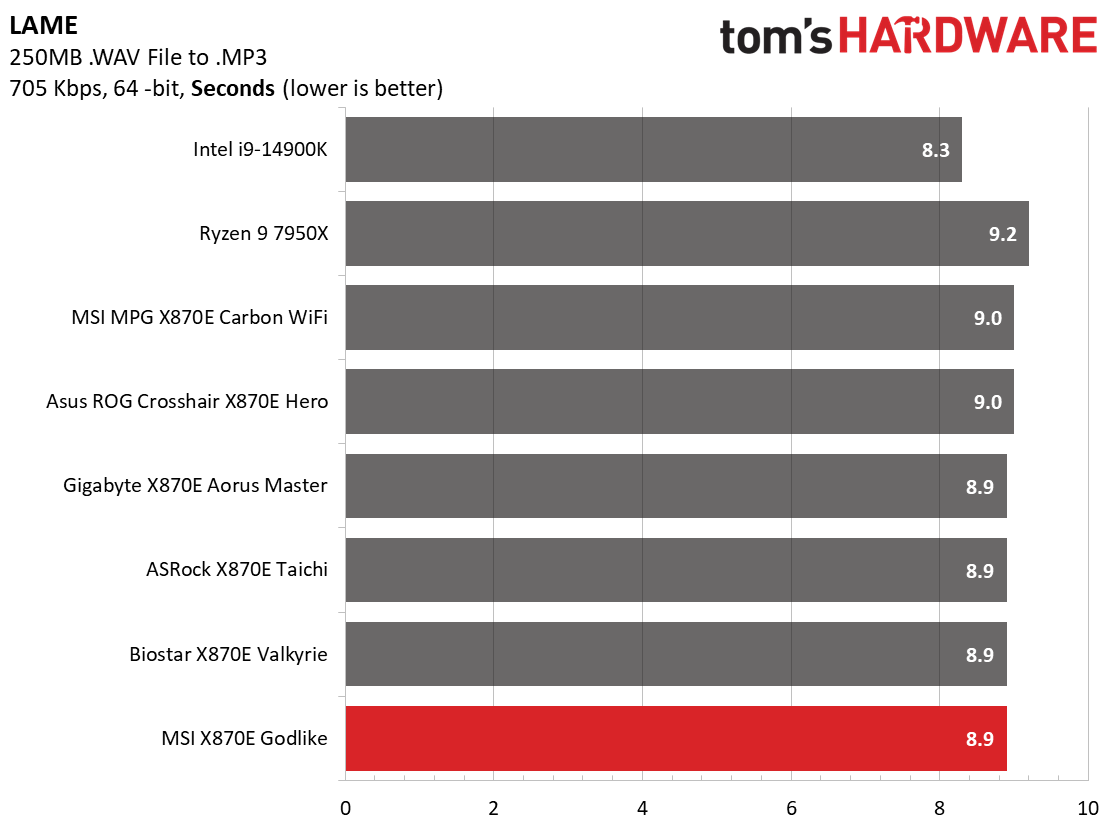
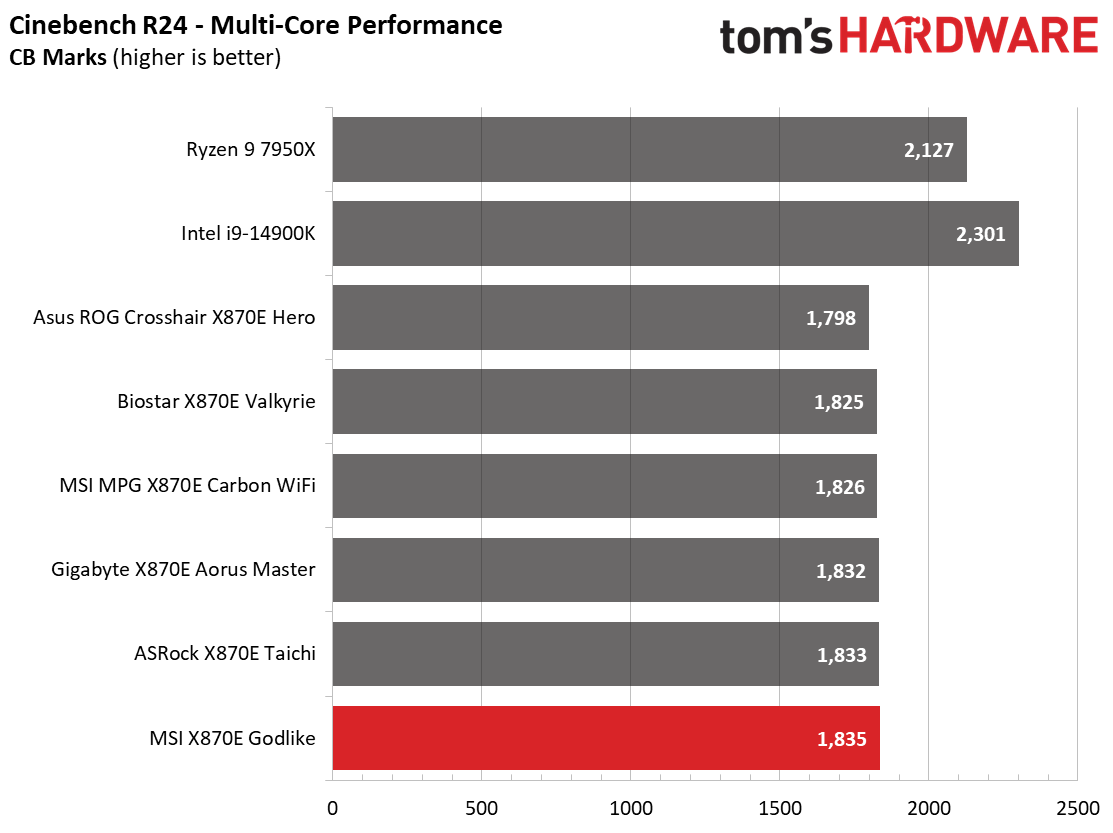
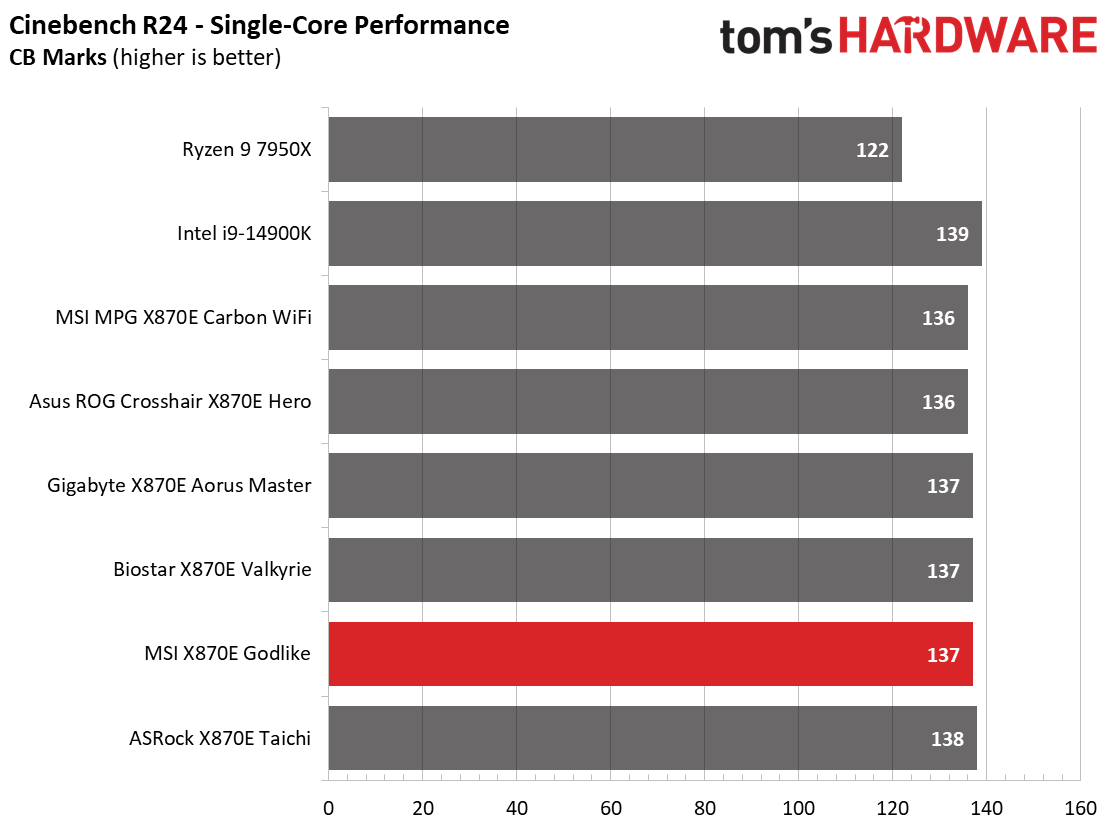
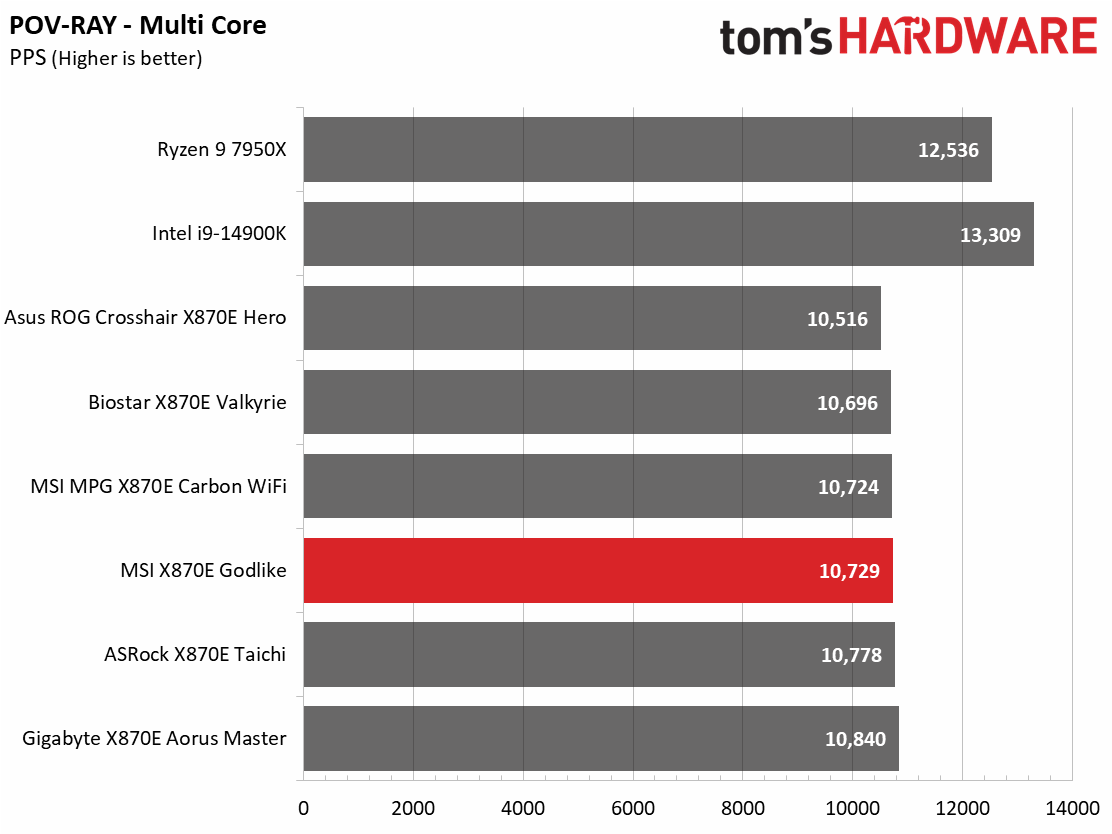

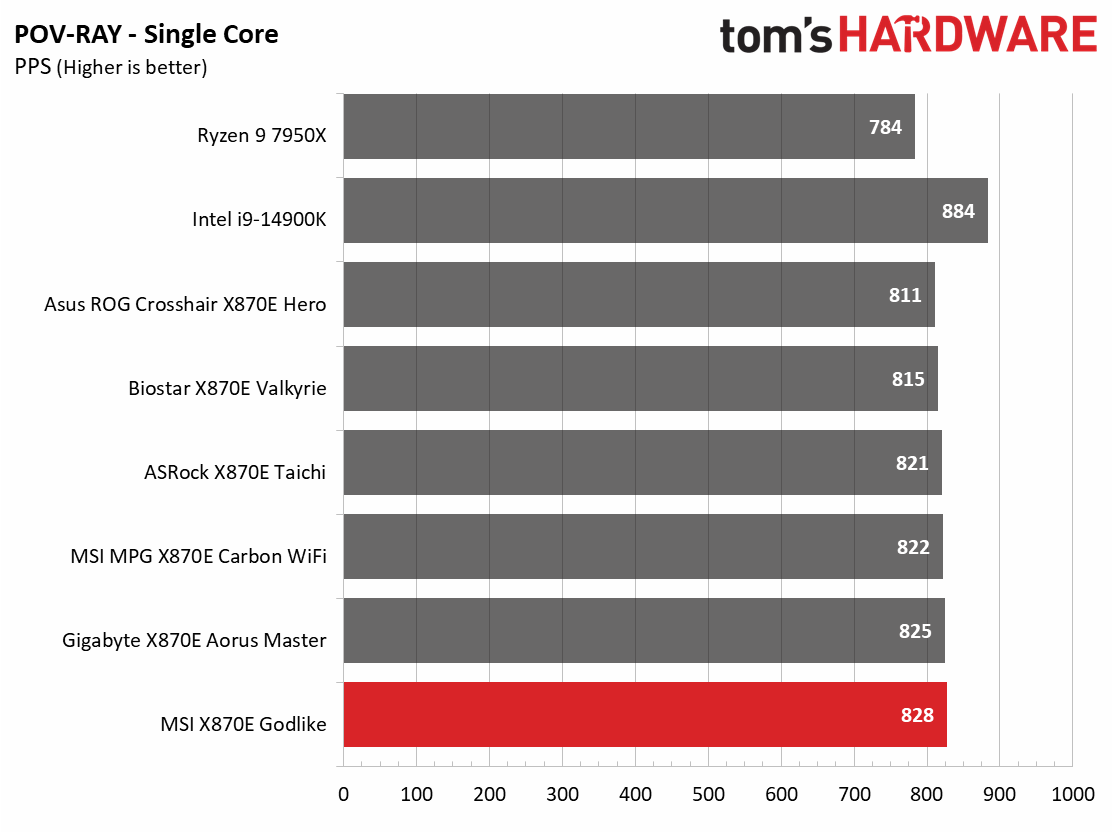

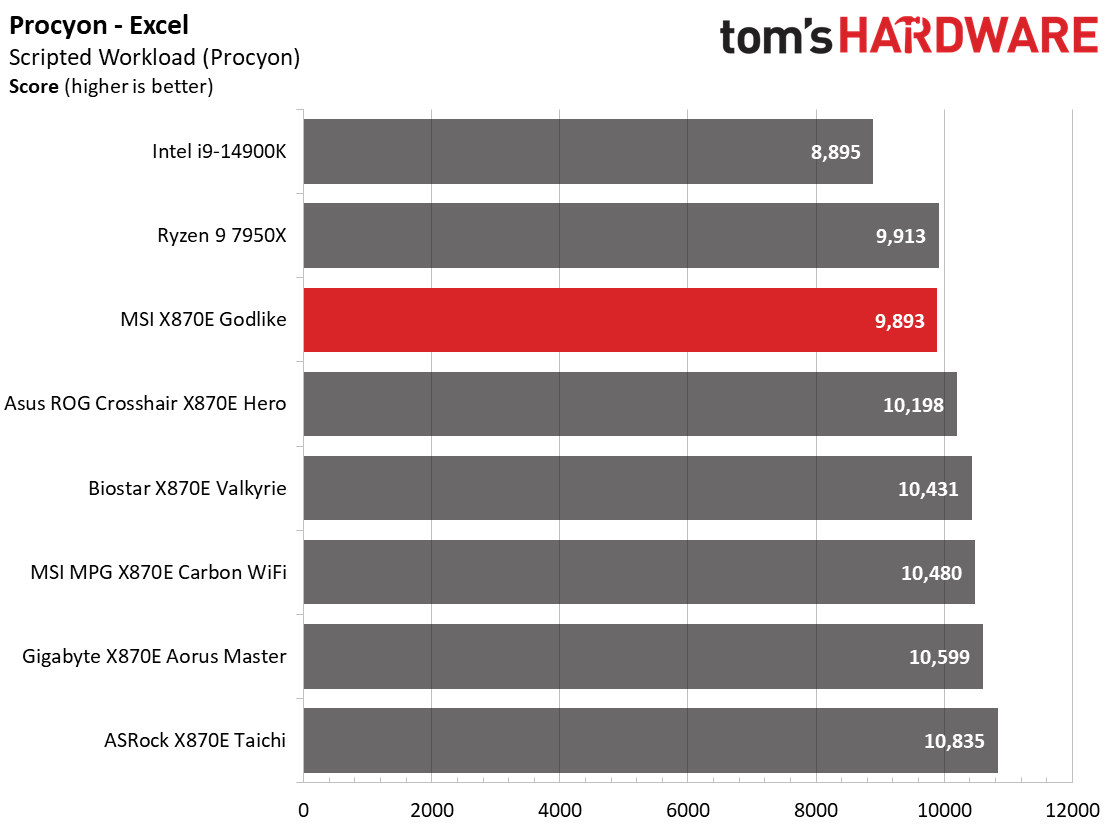
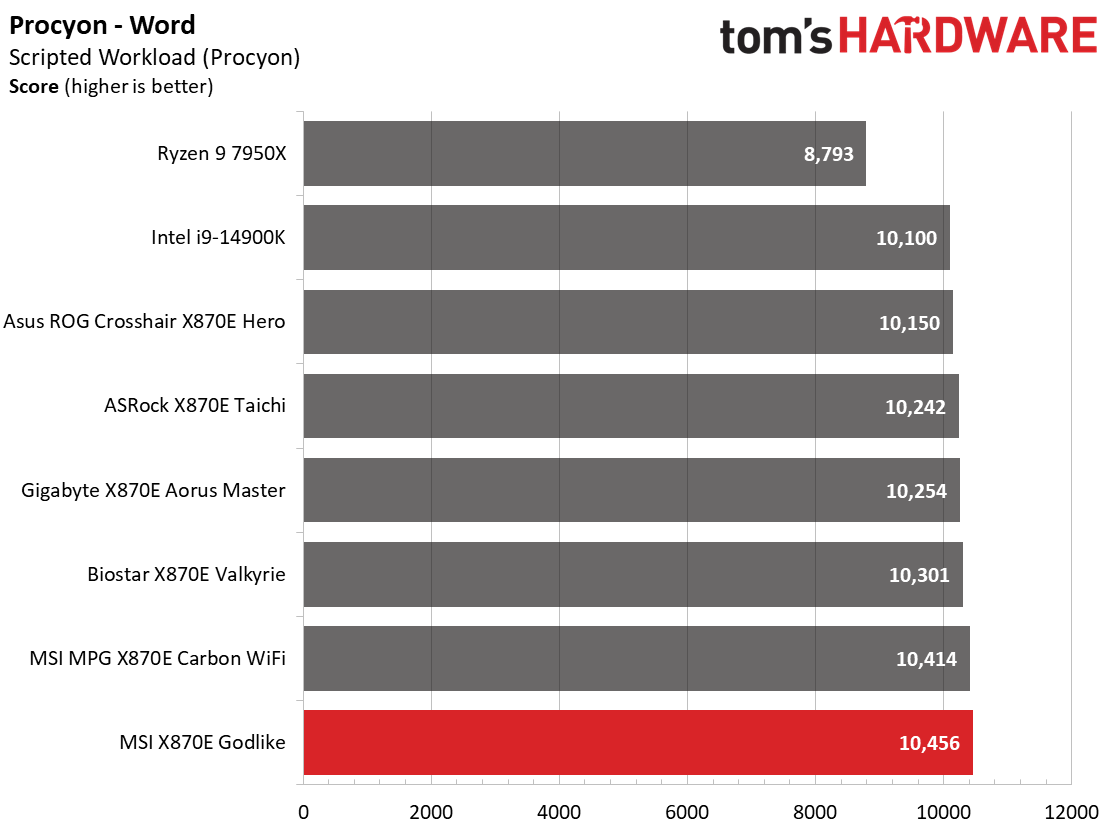
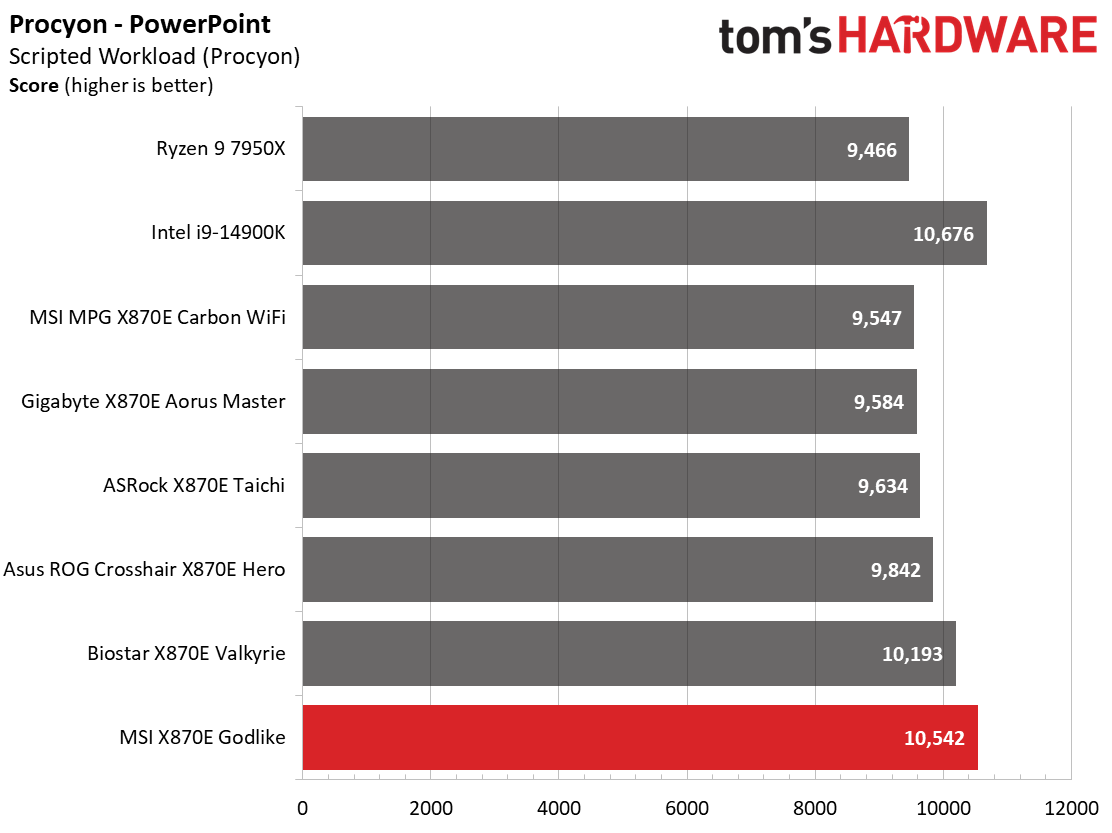
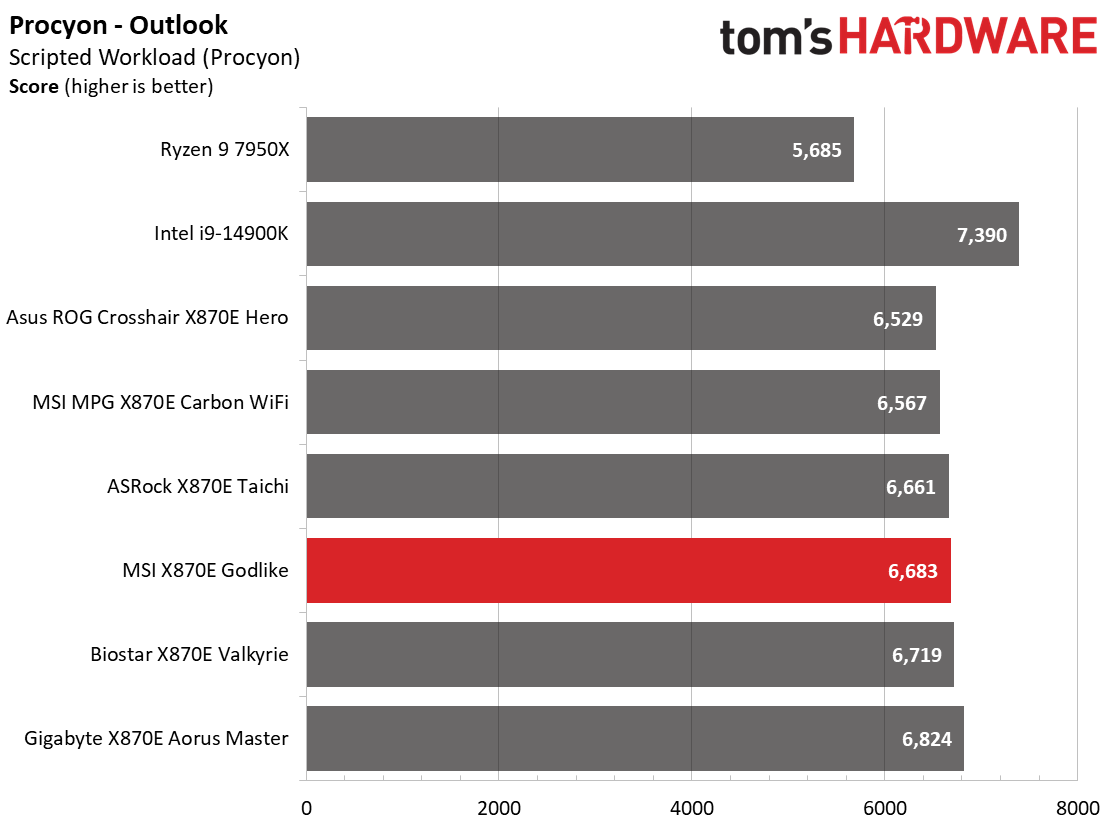
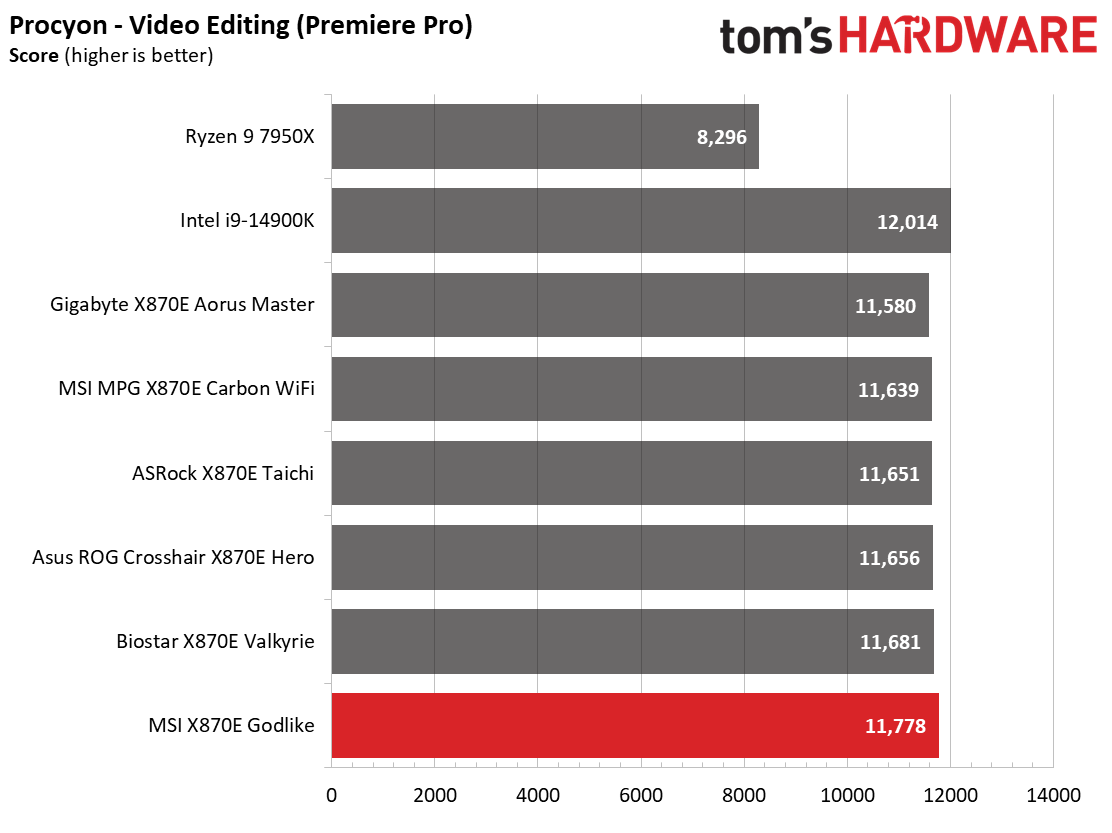
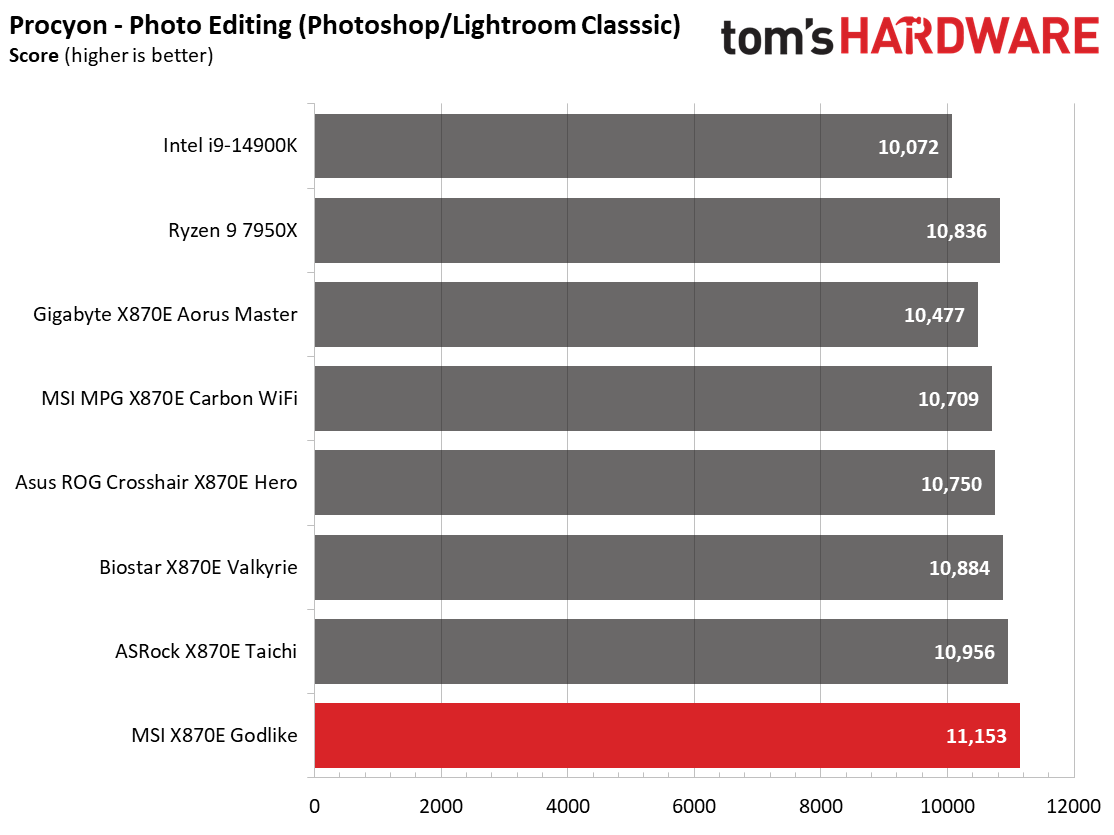
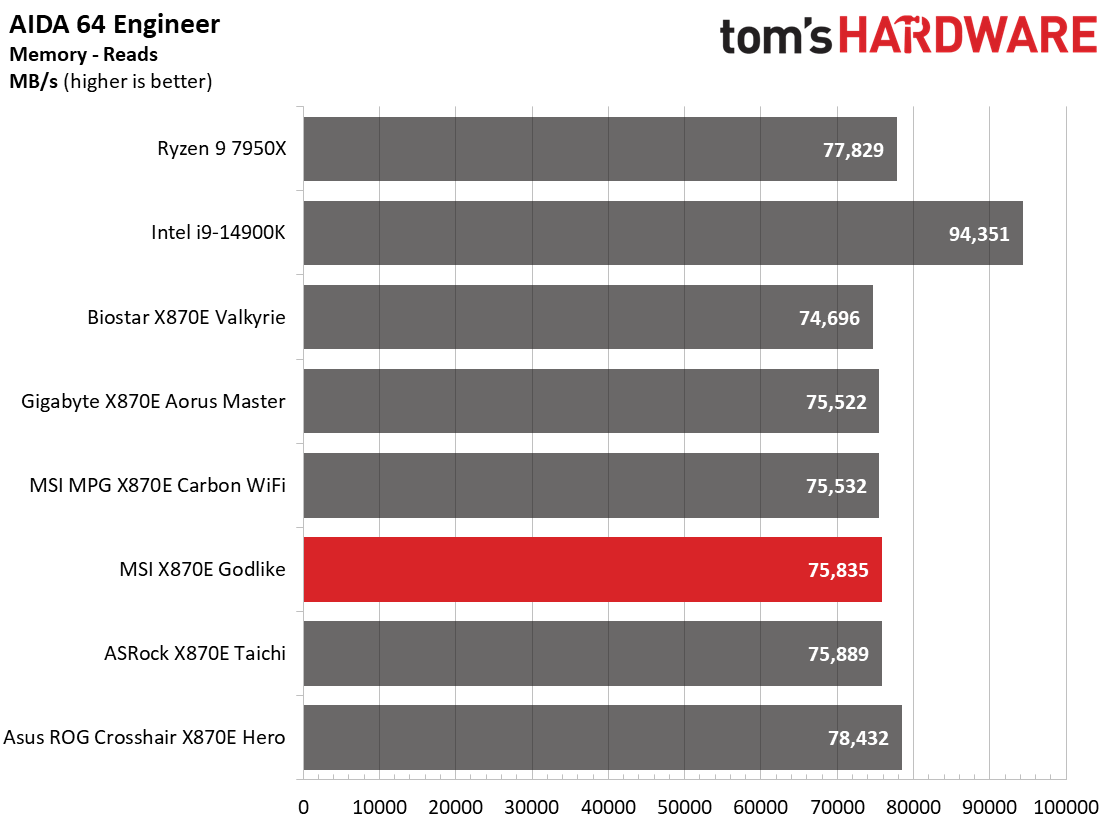
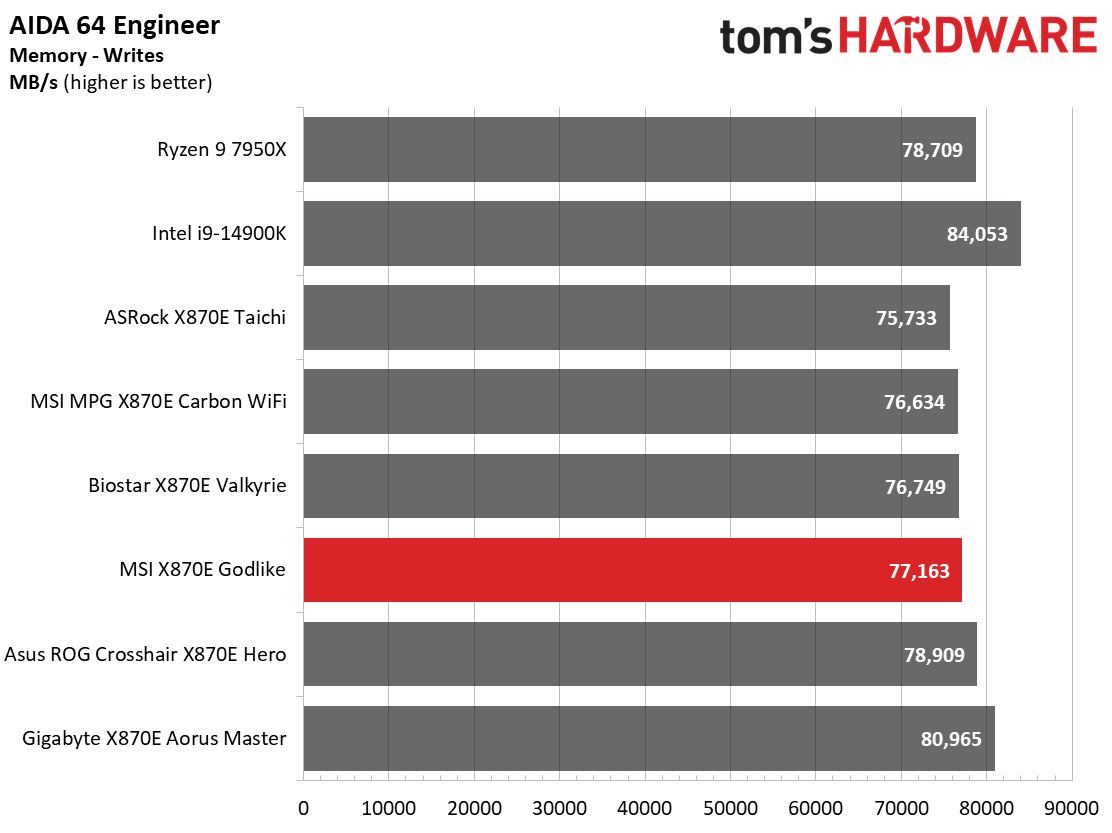
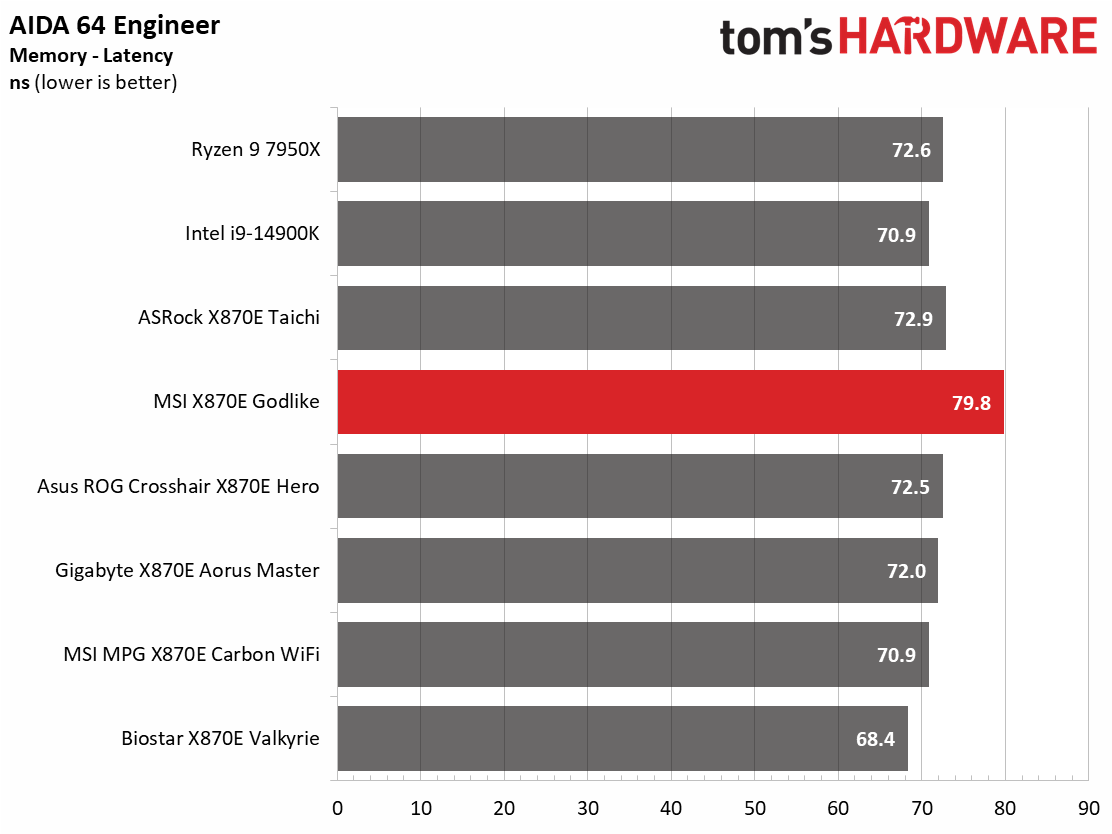
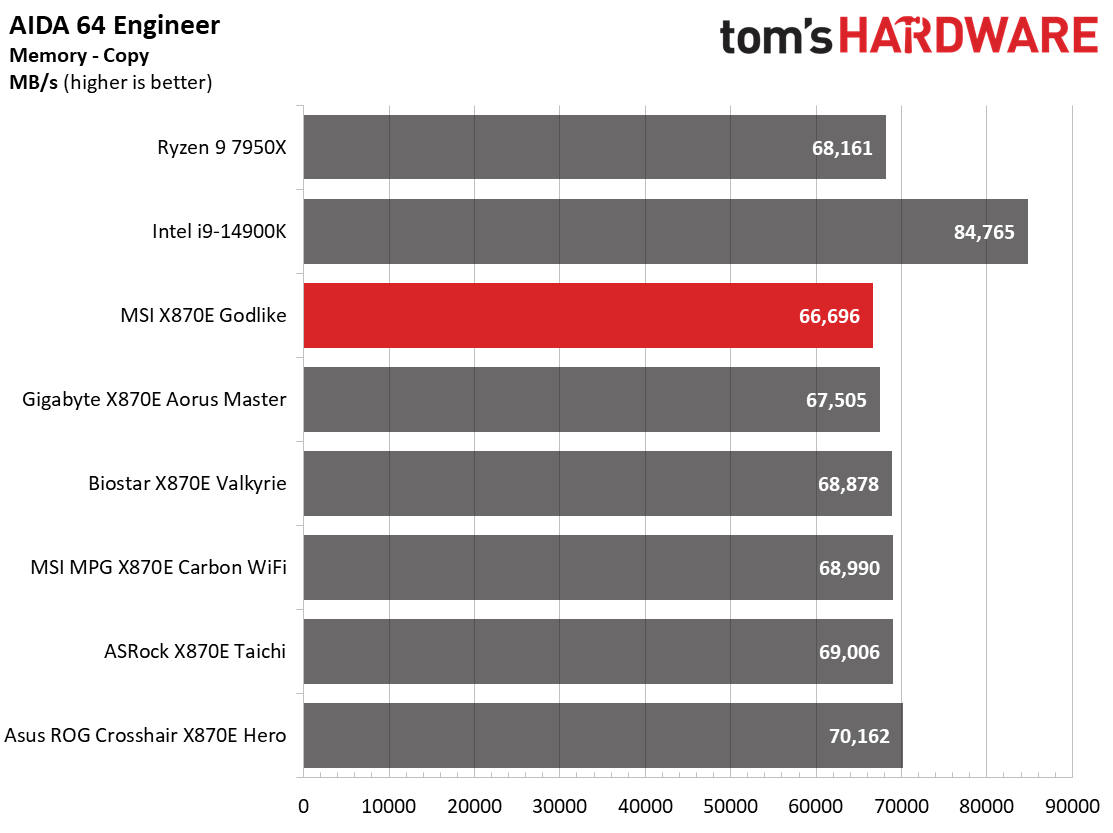
Let’s just cut to the chase: The Godlike did well across the synthetic benchmarks. At its worst, it achieved average results and mixed with the rest. That said, it doesn’t lead by much, as these results remain close together, even as we gain more data.
Timed Applications

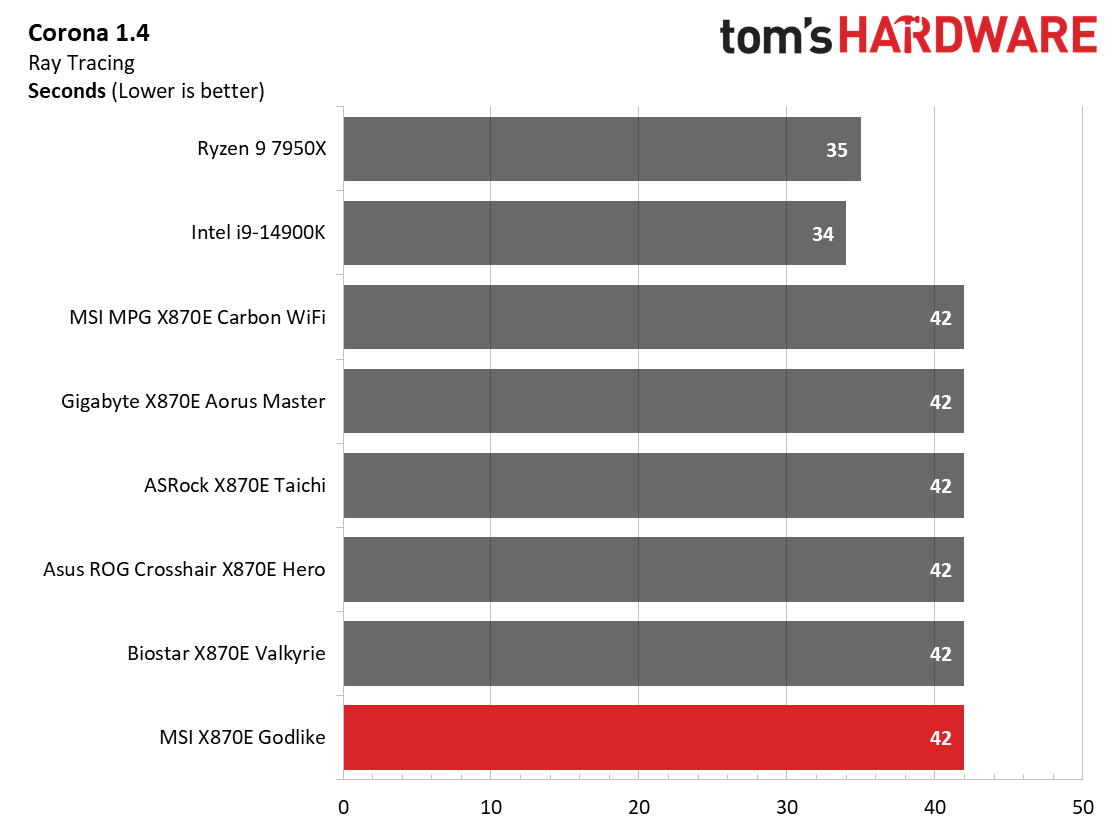
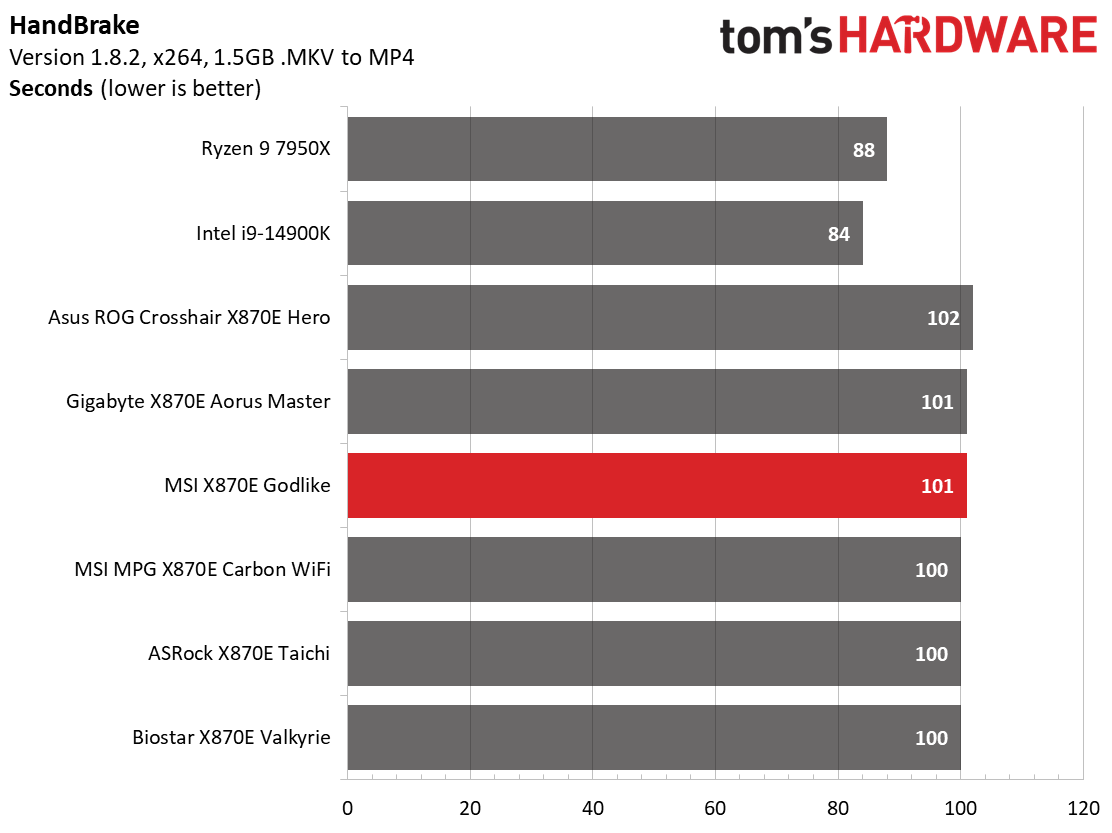
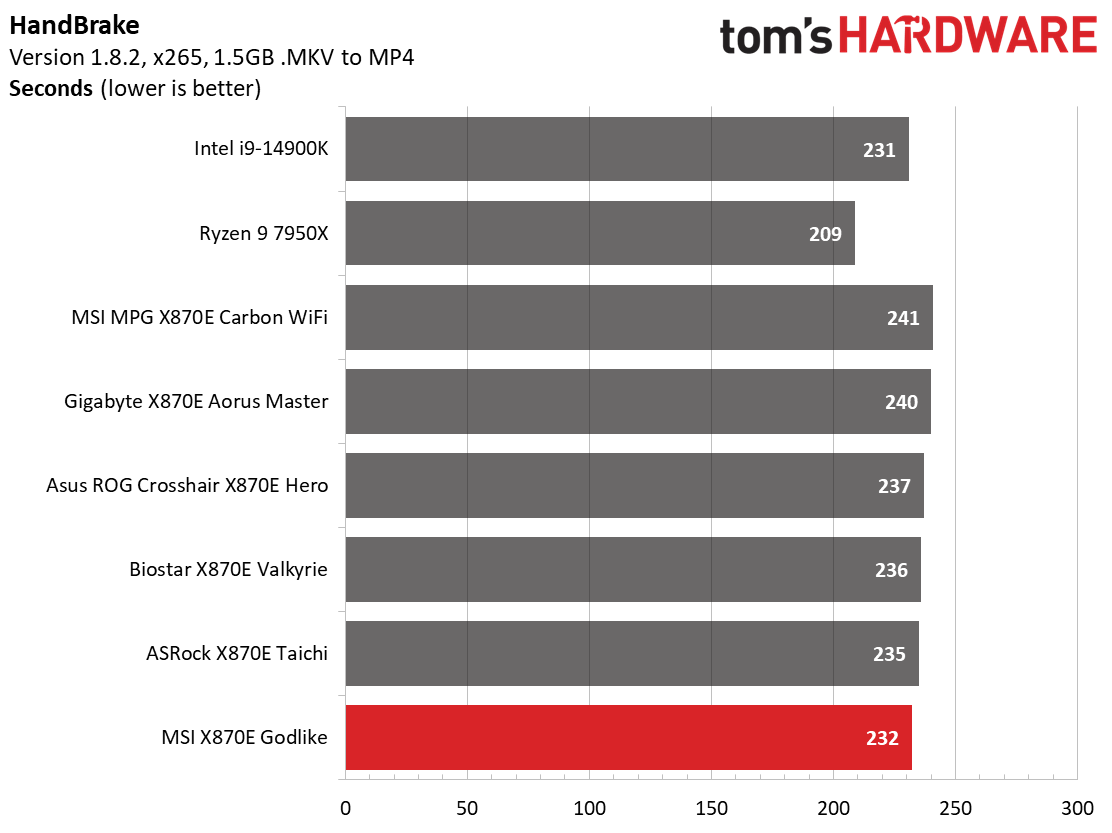
The song remains the same in our timed benchmarks, with the Godlike matching the fastest times in LAME, Corona, and the longer-running x265 Handbrake benchmark. So far, there is nothing to worry about. And at this price, that’s what we’d expect.
3D Games and 3DMark

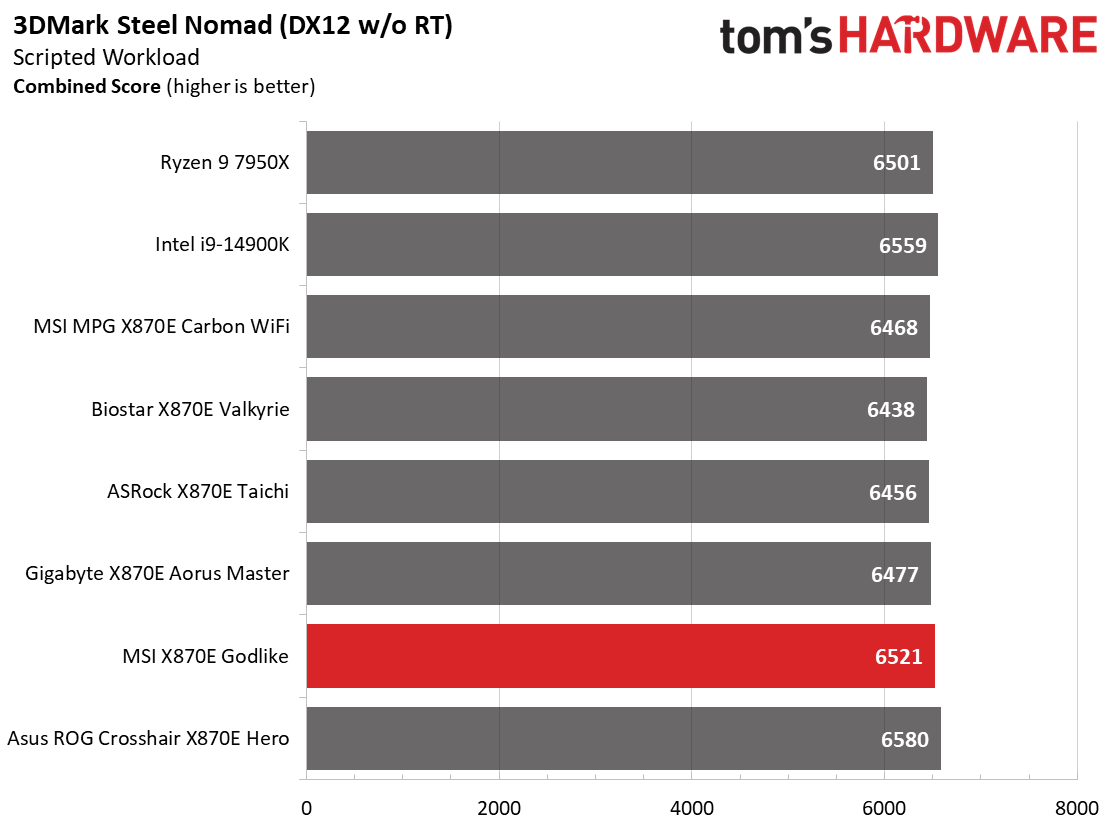
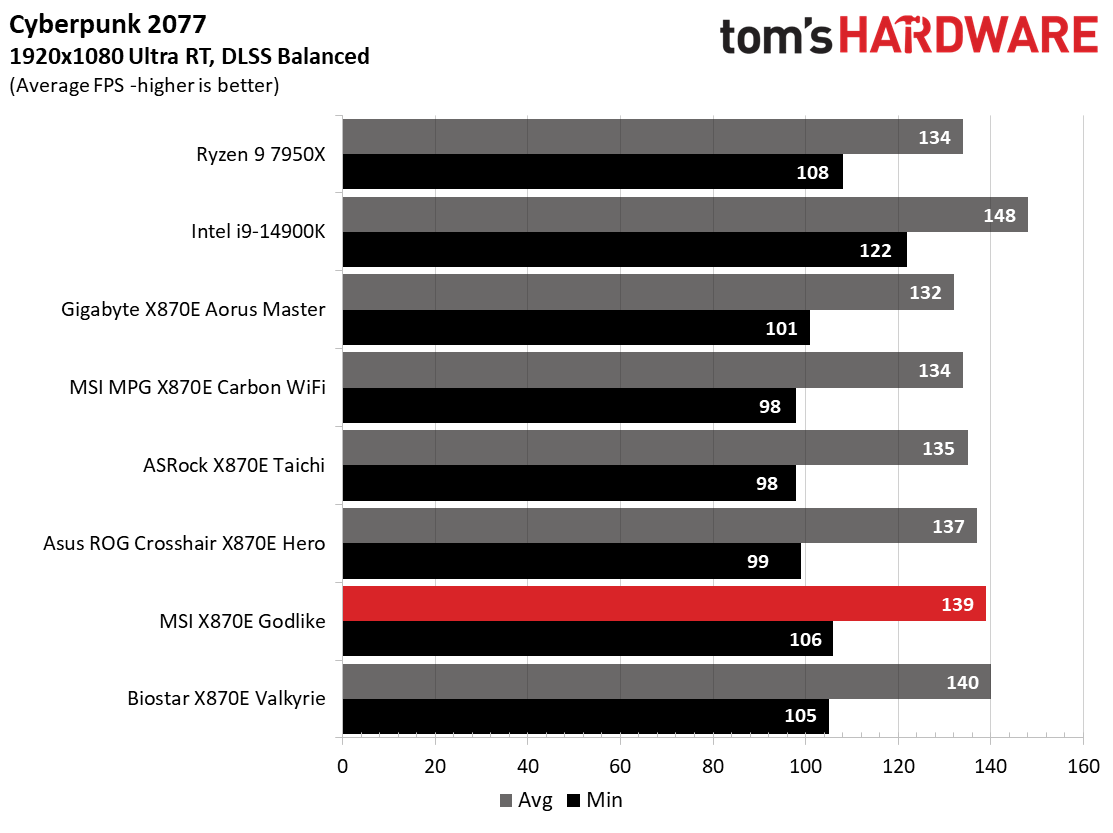
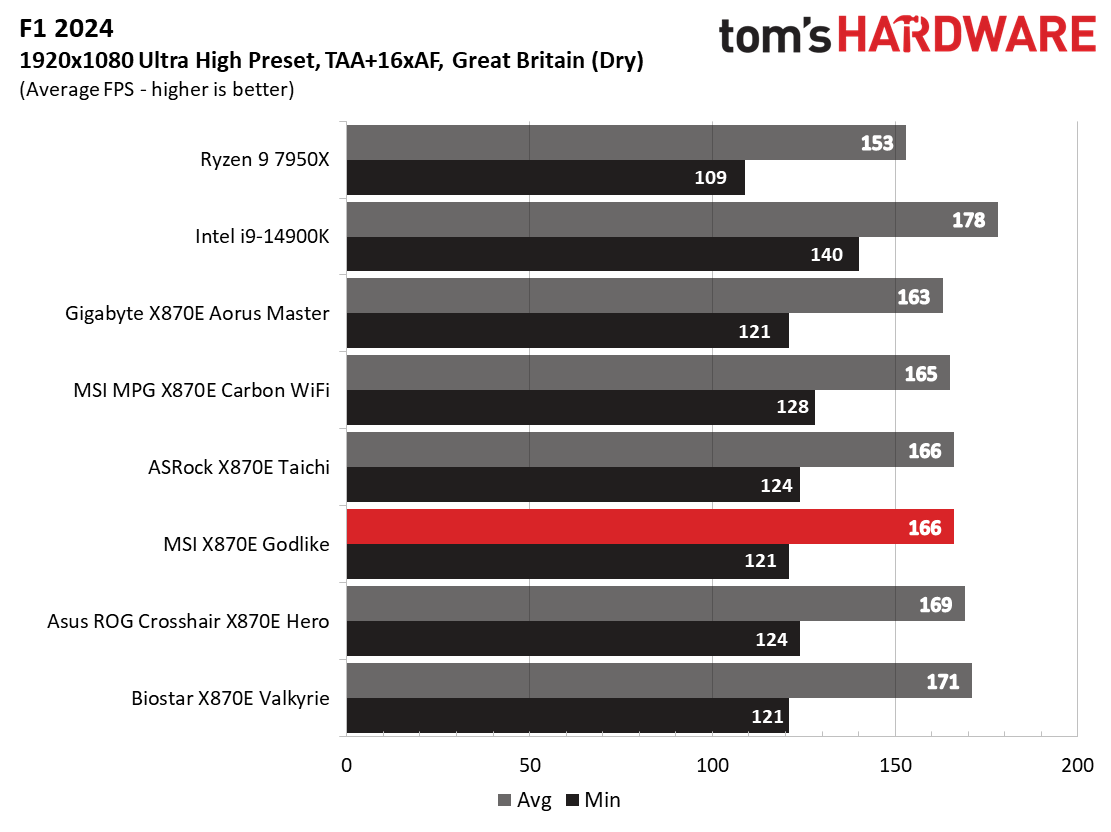
Starting with the launch of Zen 5, we’ve updated our game tests. We’re keeping the EA’s F1 racing game and have upgraded to the most current version, F1 24. We also dropped Far Cry 6 in favor of an even more popular and good-looking game in Cyberpunk 2077. We run both games at 1920x1080 resolution using the Ultra preset (details listed above). Cyberpunk 2077 uses DLSS, while we left F1 24 to native resolution scaling. The goal with these settings is to determine if there are differences in performance at the most commonly used (and CPU/system bound) resolution with settings most people use or strive for (Ultra). We expect the difference between boards in these tests to be minor, with most falling within the margin of error differences. We’ve also added a minimum FPS value, which can affect your gameplay and immersion experience.
Gaming results were average in our tests. It looks like you don’t have anything to worry about, no matter what type of work or play you throw at this board.
Overclocking
Over the past few CPU generations, overclocking headroom has been shrinking on both sides of the fence while the out-of-box potential has increased. For overclockers, this means there’s less fun to have. For the average consumer, you’re getting the most out of the processor without manual tweaking. Today’s motherboards are more robust than ever, and they easily support power-hungry flagship-class processors, so we know the hardware can handle them. There are multiple ways to extract even more performance from these processors: enabling a canned PBO setting from the BIOS, manually tweaking the PBO settings, or just going for an all-core overclock. Results will vary and depend on the cooling as well. In other words, your mileage may vary. Considering all of the above, we’re not overclocking the CPU. However, we will try out all our different memory kits to ensure they meet the specifications.
Get Tom's Hardware's best news and in-depth reviews, straight to your inbox.
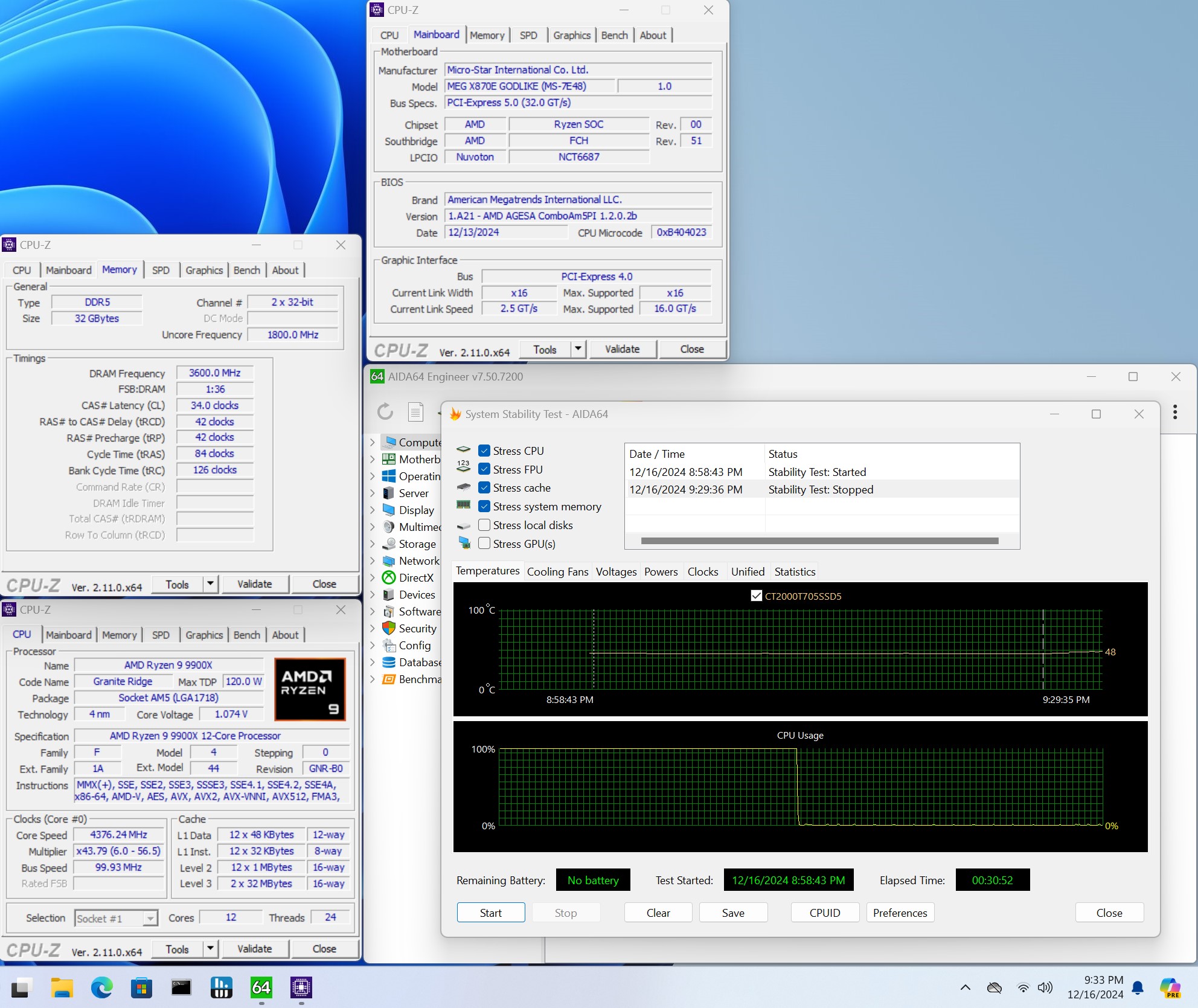
As you can see from the image above, we tested successfully using DDR5-7200. Like the Carbon WiFi, the DDR5-8000 kit booted and ran the AIDA64 memory bandwidth test on the Godlike but couldn’t pass a stress test. As mentioned earlier, that’s well past the price and performance sweet spot, and our sticks weren’t on the QVL list.
Power Consumption / VRM Temperatures
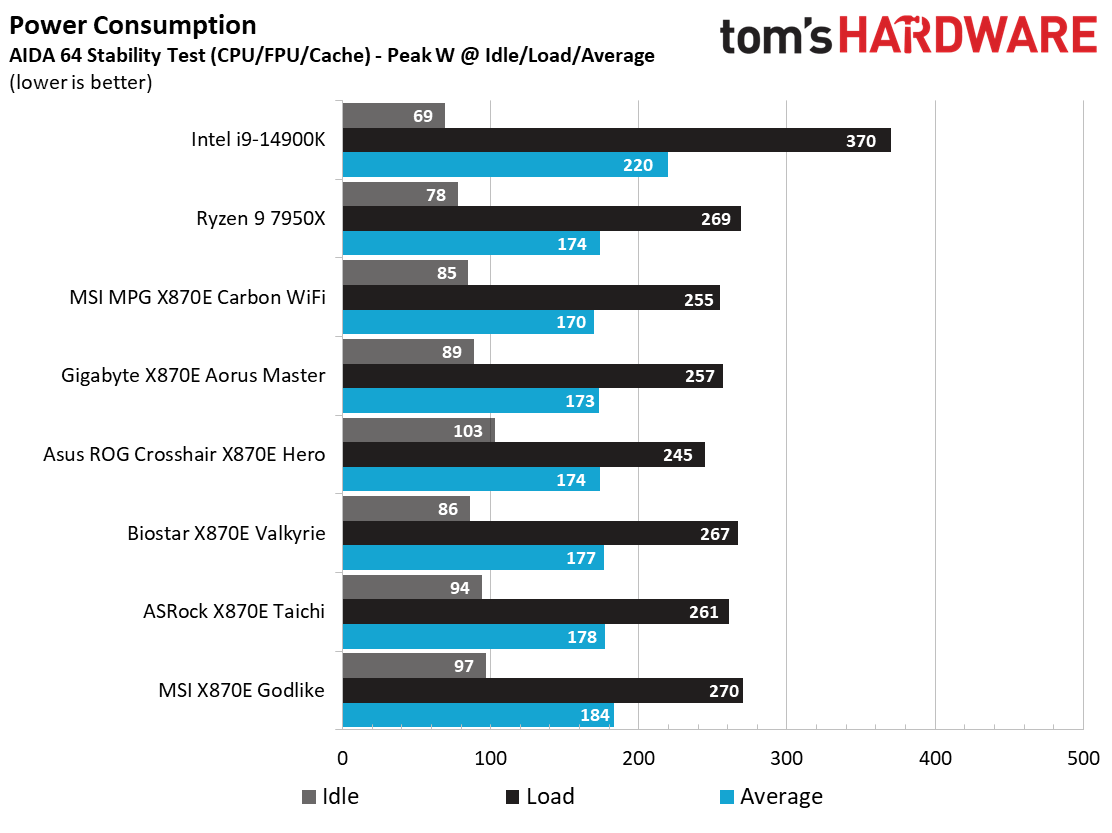
We used AIDA64’s System Stability Test with Stress CPU, FPU, Cache, and Memory enabled for power testing, using the processor's peak power consumption value. The wattage reading is from the wall via a Kill-A-Watt meter to capture the entire PC (minus the monitor). The only variable that changes is the motherboard; all other parts remain the same. Please note that we moved to using only the stock power use/VRM temperature charts, as this section aims to ensure the power delivery can handle flagship-class processors.
The Ryzen 9 9990X's power consumption is tame compared to the 7950X we used previously. Where high-end boards would peak at nearly 300W in the past, the systems now top out between 250 and 270W. The MSI X870E Carbon peaked at 255W and idled at 85W, the lowest of our current test subjects. I’d imagine we may see more wattage with the halo-type boards (think Godlike, Extreme), but otherwise, we should see similar results with other boards moving forward.
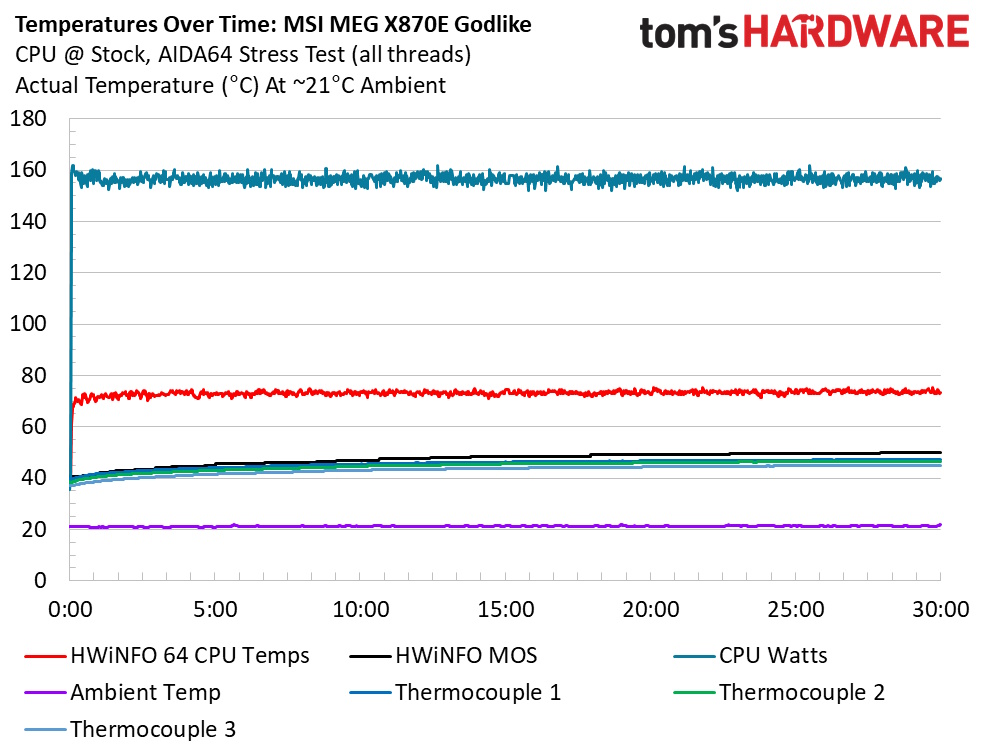
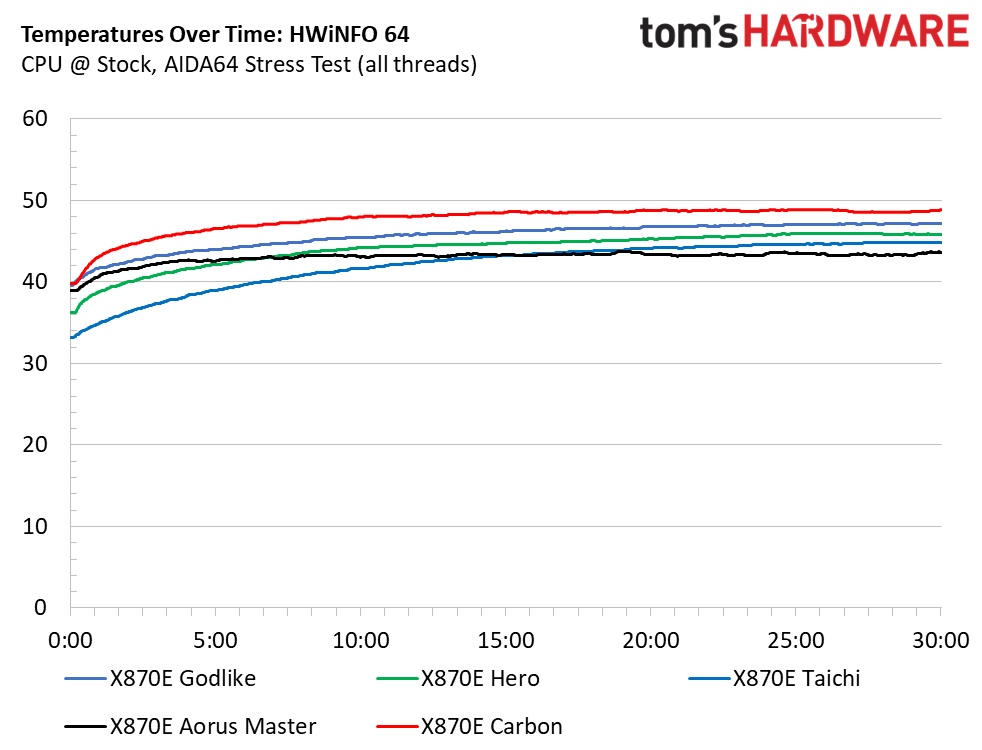
The Godlike's VRM temperatures were well within specification, as expected. The overbuilt power delivery and large heatsinks keep them running well under their maximum, peaking at 47 degrees Celsius, with the CPU holding around 156W. You can drop the more power-hungry Ryzen 9 9950X in and not worry, even when pushing things with PBO or any overclocking…with any cooling.
Bottom Line
After working with this board for a few days, I found it to be one of the better looking just sitting there idle. From the cool MSI dragon and other RGB features to the Dynamic Dashboard, it’s a sight to behold. Not only is it one of the coolest looking, but it has all of the hardware you expect from a flagship motherboard. At almost $1,100, it had better check off all of the boxes, and it does. From the mindblowing number of rear IO USB ports to its ability to run seven M.2 drives consecutively, the only thing missing is the kitchen sink.
At this price point, there isn’t any competition. All other partner’s flagship X870E boards cost less. Gigabyte has the X870E Aorus Xtreme AI Top ($799.99), Asus the ROG Crosshair X870E Hero ($699.99), and finally, the ASRock X870E Taichi at $499.99. It’s clear that Godlike is in a class of its own. And while these are all great motherboards, each with its own key features, they can’t hold a candle to what the Godlike offers. But at their respective price points, that’s an unrealistic expectation, too. On the other hand, most users don’t require seven M.2 storage options, seven USB Type-C ports, LED screens, or fan hubs. But if you do or you just want these features (like I know many people do), they’re available here for a price.
MSI’s X870E Godlike showcases some of the best hardware specifications for the platform and a premium appearance worthy of being displayed on an open test bench. While others offer some of those features for less, none do so with the flair and swagger of the Godlike. The only drawbacks are the price and perhaps the E-ATX form factor. Otherwise, if money is no object and size doesn’t matter, nothing should stand in the way of your glass-fiber and copper deity.
MORE: Best Motherboards
MORE: How To Choose A Motherboard
MORE: All Motherboard Content

Joe Shields is a staff writer at Tom’s Hardware. He reviews motherboards and PC components.
-
HardwiredWireless Lose the lights and name logo, give it an Intel chipset and socket and I'll buy two for my upgrades that I've been putting off. I need the processor that does best in compute tasks as I don't just use it for playing games and currently that's Intel.Reply -
thestryker Reply
You can turn off all the lights on MSI boards (first thing I did with mine though I did have to use software to turn off the RGB on my DRAM) and they will have a Z890 version: https://www.msi.com/Motherboard/MEG-Z890-GODLIKEHardwiredWireless said:Lose the lights and name logo, give it an Intel chipset and socket and I'll buy two for my upgrades that I've been putting off. I need the processor that does best in compute tasks as I don't just use it for playing games and currently that's Intel. -
8086 Premium to me these days is having lots of fully functional x16 pci-e slots so I can add more USB or NVME at my own leisure or even upgrade my sound or networking as needed.Reply
Just a few years ago the X570 Godlike sold for around $600 and had more PCI-e connections... so in my mind the X870E is a $600-650 motherboard with a "$500 gamer tax added"
In many ways now, the PC gamer hobby is going the way of the Audiophile.... simply charging more for something because you give it a more special sounding name which appeals to a certain group of enthusiasts. It reminds me of about 10 years ago when a bunch of hi-fi brands were gutting Oppo players and then sticking them in to their own billet faced chassis with no other improvements made and charging 10x the price. -
HideOut Reply
LOL no it isnt. The AMD 9950x is the best. But ok.HardwiredWireless said:Lose the lights and name logo, give it an Intel chipset and socket and I'll buy two for my upgrades that I've been putting off. I need the processor that does best in compute tasks as I don't just use it for playing games and currently that's Intel. -
newtechldtech $1100 price and no PLX chip for dual 16 lanes slots ?Reply
Given the huge Gen 5 PCIe bandwidth , a switch chip 16 to 16+16 is a must for such high end Priced motherboards. like in old times. in old times for $400 only we could get a PLX motherboard . -
Li Ken-un Reply
It’s a choice between consumer motherboard with server PCIe switch or a workstation/server system.newtechldtech said:$1100 price and no PLX chip for dual 16 lanes slots ?
Given the huge Gen 5 PCIe bandwidth , a switch chip 16 to 16+16 is a must for such high end Priced motherboards. like in old times. in old times for $400 only we could get a PLX motherboard .
I’m running the former, and the PCIe switch alone is $1,500 plus the cost of cabling and enclosure/adapter. The workstation/server route looks a lot more attractive now for lots of PCIe lanes. Built-in PCIe switch on a consumer platform motherboard might not be much cheaper than a PCIe switch AIC. -
SomeoneElse23 Joe TH: the specs list on page 1 has incorrect data for the network jacks. You correctly state in a few places there are 10GbE and 5GbE, but on the specs list you says 2.5GbE and 5GbE for network jacks.Reply -
FITCamaro Reply
This.logainofhades said:No consumer board is worth $1100.
I get inflation but high end boards used to be $400, maybe $500. $1100 is an entire computer. Tell me what this does significantly better than a $200-300 board.
